#monks in history
Text
One of the recurring philosophical questions is:
"Does a falling tree in the forest make a sound when there is no one to hear?"
Which says something about the nature of philosophers, because there is always someone in a forest. It may only be a badger, wondering what that cracking noise was, or a squirrel a bit puzzled by all the scenery going upwards, but someone. At the very least, if it was deep enough in the forest, millions of small gods would have heard it.
Things just happen, one after another. They don't care who knows. But history...ah, history is different. History has to be observed. Otherwise it's not history. It's just...well, things happening one after another.
Terry Pratchett, Small Gods
#history monks#small gods#discworld#terry pratchett#history#causality#events#meaning#philosophy#philosophers#observation#reality#perception#knowledge#squirrels#badgers#the nature of philosophers#things just happen#if a tree falls in a forest
1K notes
·
View notes
Text

Monks burying a Gold Chest in the Moonlight by August von Wille
#august von wille#art#monks#gold#chest#moonlight#moonlit#gothic#german#germany#europe#european#church#churches#churchyard#history#moon#lantern#architecture#landscape#night#evening
585 notes
·
View notes
Text
Was minding my own business today when my brain suddenly recalled a history text I read years ago back in college describing homosexuality in medieval monasteries. Being an isolated population of entirely men comprised of the cast-off and spare sons of local lords and nobles, it was not uncommon for the monks to rampantly bugger the hell out of each other.
Then, in a display of rules-lawyering that medieval monks were infamous for, the monks would Confess their recent “sins” to their lover so they could Absolve each other. That way, they could walk around with a spiritually clean slate until the next time they got together with the hot monk in the next cell over and “sinned” again. Genius. Outstanding. Gaming the system. No notes.
#History#LGBTQ History#Medieval History#Medieval Monk#Queer History#Shower Thoughts#yes this is real#and if memory serves the book's author also found it as funny as I did
2K notes
·
View notes
Text
You're in her dms. I'm frantically annotating the margins of a manuscript she will discover 457 years after my death. We are NOT the same.
1K notes
·
View notes
Note
Save me king gojo and his loyal knight geto that have crazy gay sex with an awful power dynamic
no wait,,, i know the allure of king!gojo + knight!geto is strong but,,, consider religious-leader!geto,,, just consider it,,,
he's a holy man, devoted to his faith above all else, and so effortlessly charming that he's risen to the highest possible station within the church and to the side of the young, often careless king. he's known for being charming and even-tempered, if a bit curt when it comes to the tedium and frivolity of royal court, but he never acts in a way that would be considered unbefitting of either a man of his status or such shining example of his faith. he's cherished by both nobility and common people for his ability to keep the young king in-line and out of trouble, and no one has to know what kind of lustful thoughts run through his mind whenever he crosses paths with his beloved king's adorable little maid, what positions he imagines you in as he chants his prayers and clutches his roseries, what vile things he imagines doing to you whenever the king lets you out of his sight, whenever he catches you looking at him with more fear than reverence. it's a good thing he's a man of such impeccable reputation. that way, if you do every scrounge up the courage to tell anyone what he whispered in your ear after forcing you into his own personal confessional booth, there's not a chance in the world they'll believe you <3
((he and gojo also still having crazy gay sex with an awful power dynamic but that's happening separately.))
#admittedly i do not know enough about history to know what to call him#priest!geto? ponifex!geto?#is there a word for like#'pope but sexually chaged'?#maybe he can still just be a monk#but like#a hot monk#personal#anon ask
146 notes
·
View notes
Text
Priests' outfits - Jikitotsu, Daimon, and Hentetsu
(as worn during Edo period - great charts by Nadeshico Rin). You can find more about samurai ranks and their regulated attires under the tag "samurai kimono".
"Hight Priest" jikitotsu
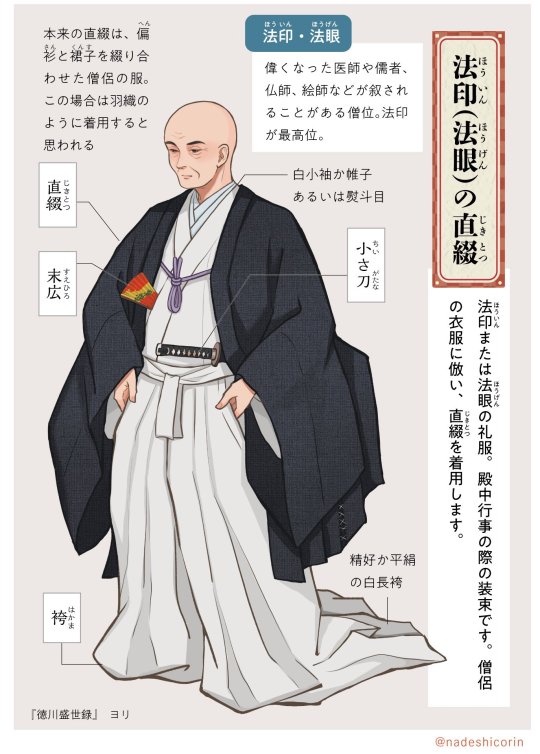
This outfit was worn for court events by Buddhist priests of the highest rank ( 法印 Hôin) and second highest rank (法眼 Hôgen). Those titles could also be also given to 儒者 Confucian scholars, 医師doctors, Buddhist 絵師 painters and 仏師 sculptors, etc.
直綴 Jikitotsu - type of monk robe, originally made by stitching together a 偏衫 henzan (monk robe covering the upper body) and a 裙子 kunsu (monk robe covering the lower body) together.
Overtime, jikitotsu came to be worn opened, more like a haori vest.
末広 Suehiro - a type of formal folding fan. TN: the fan drawn here ressemble more a 中啓 chûkei, as suehiro have curving ribs which don't seems to be the case here (find more about fan types here)
(長)袴 (Naga)bakama - hakama pants with long trailing legs, here made of hiraginu (plain silk)
白小袖 Shiro-Kosode - white kosode (=ancestor of the kimono)
/or/ 帷子 Katabira - thin garment made from hemp or raw silk (worn during Summer). Note that 経帷子 kyôkatabira designates a shroud (=the white kimono used to dress the dead).
/or/ 熨斗目Noshime - kosode (=ancestor of the kimono) with stripes/lattice pattern at waist area
小さ刀 Chîsagatana - small katana
"Companion" formal kimono
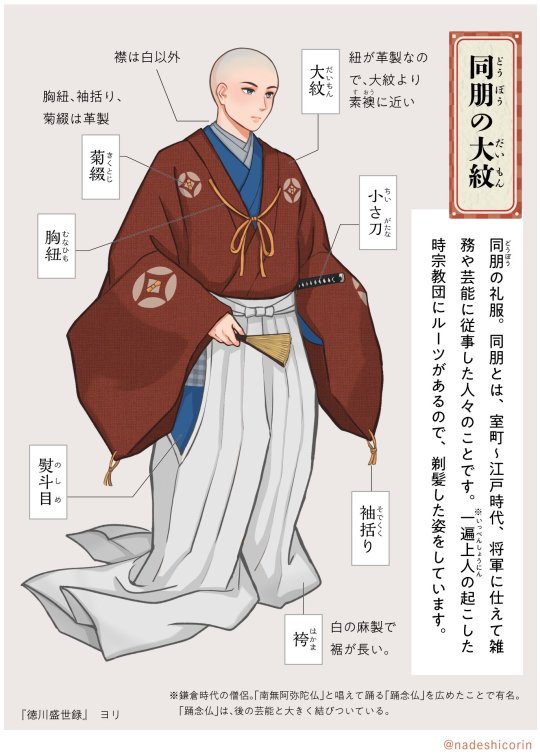
First people helping buddhist priests, 同朋 dôbô (lit. "companions) became overtime men attending on the Shogun, feudal lords and other high-ranked officals.
They were in charge of miscellaneous tasks (like cleaning, messengers etc.), or depending on their talents more skilled ones (dance, music, ikebana, tea ceremony etc.).
大紋 Daimon is a specific hitatare set, patterned with large 紋 mon (clan/family crests)
菊綴 Kikutoji - decorative tassel-like knots, first appeared on Heian nobility clothes. Here, those were leather ones
胸紐 Munahimo - chest ties, first appeared on Heian nobility clothes. Here, those were leather ones
熨斗目 Noshime - kosode (=ancestor of the kimono) with stripes or lattice pattern at waist area.
Also note the colored undergarments collars.
袖括 Sodekukuri - decorative sleeve ties. Originally appeared on Heian clothings (like kariginu, nôshi, etc) where they were used to tighten sleeve cuffs. Here, those were leather ones
(長)袴 (Naga)bakama - hakama pants with long trailing legs, here made of white linen
小さ刀 Chîsagatana - small katana
The Proto-haori

This outfit was the formal wear worn by lower class priests, scholars, doctors, artists, etc.
編綴 Hentetsu (lit. "stitched together") - a vest with large and long boxy sleeves, made from gauze or plain silk, most often black or dark brown. The chest straps were also made of the same fabric
It evolved from 十徳 jittoku (itself a variation of 直綴 jikitotsu, see above). First a casual wear for court nobles, and then spread to lower-class samurai who wore it over their kosode from Muromachi era and on.
Its use then reached other social classes during Edo period. Overtime and minor variations, it finally became known as our modern 羽織 haori
服紗(小袖) Fukusa(kosode) - a kosode (=ancestor of the kimono) bearing crest, and made from soft silk (like habutae or rinzu). In summer, it was a katabira (thin garment made from hemp or raw silk)
/or/ 熨斗目 Noshime - kosode (=ancestor of the kimono) with stripes or lattice pattern at waist area
#japan#history#fashion#samurai kimono#nadeshico rin#samurai#edo era#edo period#ressources#references#men kimono#着物#buddhist priest#monk#jikitotsu#henzan#kunsu#Suehiro#chûkei#nagabakama#kosode#Katabira#Noshime#Chîsagatana#dôbô#Daimon#Kikutoji#munahimo#Sodekukuri#Hentetsu
192 notes
·
View notes
Text
Rare JTTW Puppet Play
I am proud to host a guest post by @ryin-silverfish about a rare JTTW puppet play from Quanzhou, Fujian province, China. The play is roughly from the Yuan to early-Ming period, meaning that it predates the 1592 edition of the novel. There are parallels with the finished work, pointing to a possible influence, or at the very least, they borrowed from the same source. But there are many differences as well. The most surprising for me are:
Sha Wujing is the one who transforms into a white horse.
Erlang becomes one of Tripitaka's disciples after being demoted for flirting with a heavenly maiden.

An example of modern Quanzhou string puppetry depicting a battle between Sun Wukong and Princess Iron Fan.
#Sun Wukong#Monkey King#Tripitaka#Sanzang#Tang Monk#Zhu Bajie#Sha Wujing#puppetry#puppet history#puppet#Quanzhou#Fujian#Chinese theater#zaju play#Journey to the West#JTTW#Lego Monkie Kid#LMK#Erlang shen#Erlang
157 notes
·
View notes
Text

Bodleian Library MS. Eng. poet. a. 1 f.126r https://digital.bodleian.ox.ac.uk/objects/52f0a31a-1478-40e4-b05b-fddb1ad076ff/
Two monks having sex behind several scenes of the Virgin Mary
(I may have cited this image as part of my dissertation to prove queer monks existed in the middle ages)
#medieval#medieval manuscripts#middle ages#cloistercore#medieval monk#queer#queer history#gay monks#monkposting
316 notes
·
View notes
Text
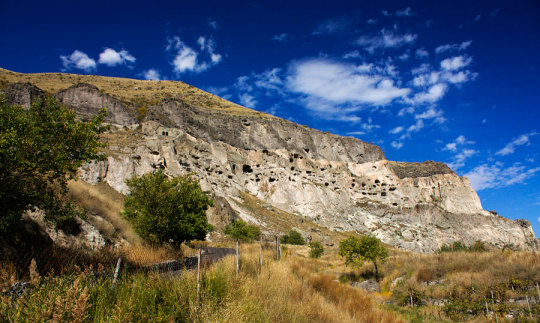
Vardzia, Georgia Ca. 1100 AC. Five monks still live in this mountain. Every morning at seven they ring the bell in the high arch.
54 notes
·
View notes
Photo


William Etty (English, 1787-1849)
Monk Bar, York, 1838
York Art Gallery
#william etty#art#english art#monk bar#fine art#fine arts#classical art#traditional art#european art#europe#europa#1800s#medieval#york#english#england#yorkshire#european history#historical art#historical#history#culture#western civilization#1700s
467 notes
·
View notes
Text

Hawaiian monk seal
By: Russ Kinnie
From: Natural History Magazine
1977
70 notes
·
View notes
Video
forget the monarchy! Long live the crafts people!
#tiktok#tassels#greedy peasant#arts and crafts#crafts#craftspeople#crafts people#infographic#british monarchy#monarchy#fabric#monks#coronation#british royal family#royal family#royal history#the royal family#royality#art#art history
260 notes
·
View notes
Text
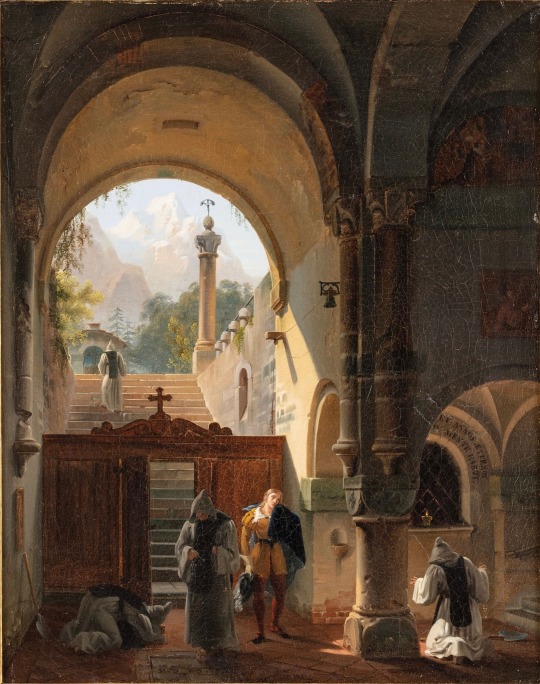
Portico of a Monastery by Giovanni Migliara
#giovanni migliara#art#portico#gentleman#noble#nobleman#aristocrat#medieval#middle ages#renaissance#monks#monastery#architecture#europe#european#history#mountains#mountain#religion#gothic#abbey#christianity#christian#les amans malheureux#le comte de comminge#mémoires du comte de comminge#comminges#count of comminges#france#italy
384 notes
·
View notes
Text

Michelangelo's "Torment of St. Anthony," a rather imaginative version of the legend of the hermit saint. Anthony, who some call the first Christian monk, lived alone in the desert, supposedly eating nothing but bread and salt. The legends say that he was tempted powerfully in the desert, but heroically resisted. It probably didn't look like this in real life.
{WHF} {Ko-Fi} {Medium}
211 notes
·
View notes
Text
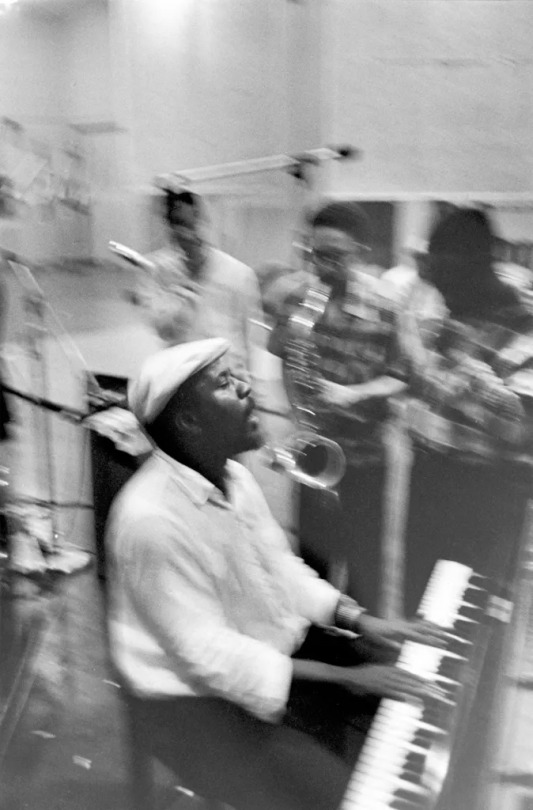
Lee Friedlander – Thelonius Monk
1957
#history#vintage#photography#portrait#black and white photography#musician#music#jazz#modernism#1950s#1957#thelonious monk#modern music#pianist#piano#studio#recording#lee friedlander#photographer
1K notes
·
View notes
Text
reasons i would make a great medieval monk:
• aroace - no problem with a vow of celibacy and the idea of not being able to marry isn’t a concern for me personally
• autistic - a segmented day? separated by hour? with specific things to do in those times? excellent!
• big lover of bread and cheese
• do love a little sing-song and chanting in a rhythm soothes me
• love scribing shit
• love doing those silly ass looking flouncy letters
• one of my special interests is medieval religion. so. bonus.
• oh i need to be silent for bit? i already go non-verbal sometimes babygirl that's not a problem
• monk robes provide 0% body shape. it’s all rectangle. excellent.
#oh to be a monk sitting around my monastery scribing shit in flouncy letters#medieval#medieval history#history#autism#monks#medieval monks#tudor history
34 notes
·
View notes